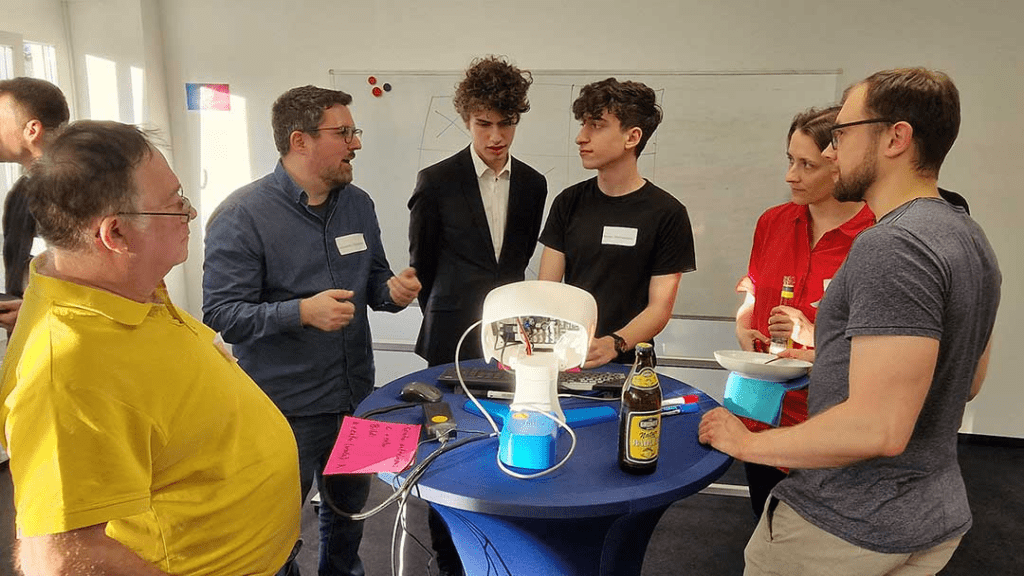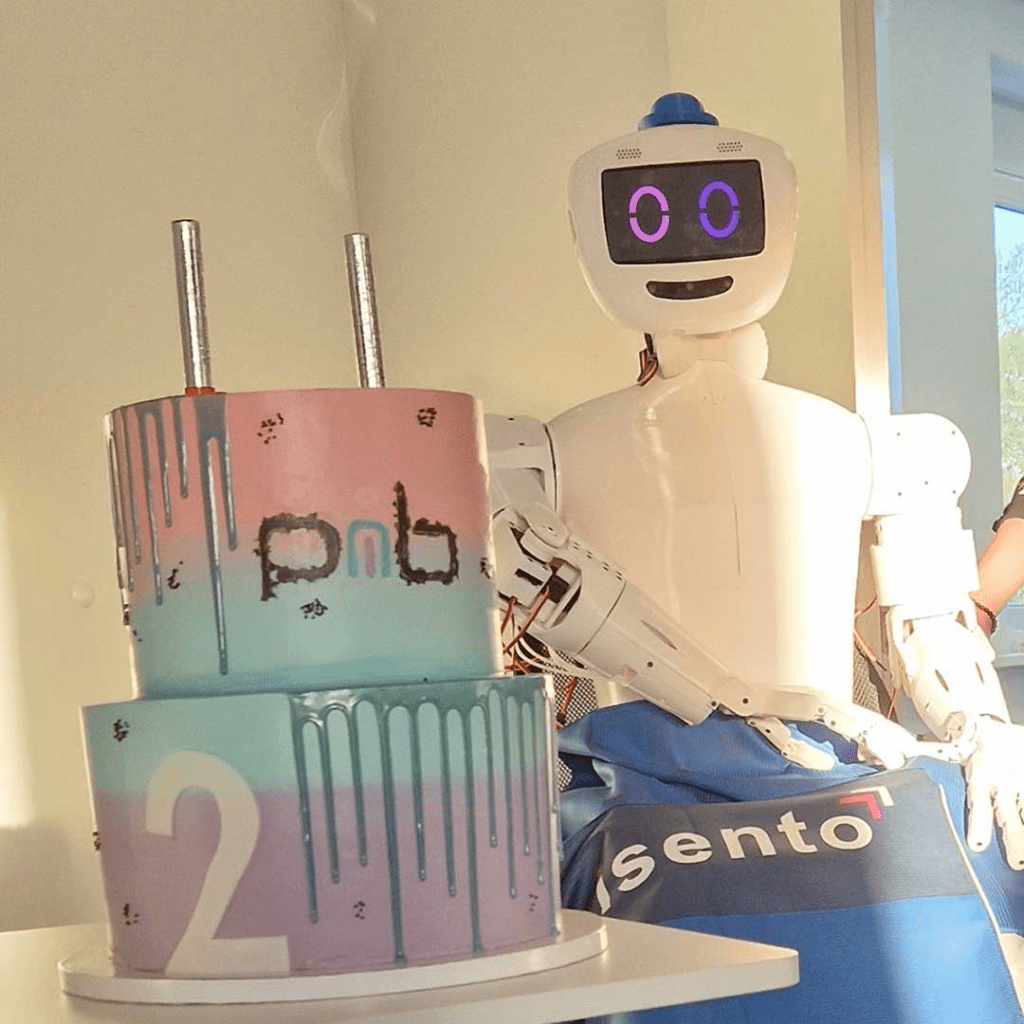2 years ago, the open source robotics project pib was launched. The goal of pib, the printable intelligent bot anyone can build themselves, is to lower the barriers and make robotics and AI accessible to anyone who is interested. Over the past two years, pib has built an active and dedicated community that supports the project in moving forward. Therefore, a lot has happened since the project launch – time to look back on how far pib has come.

Milestones, Challenges and What Comes Next
It’s not every day that a robot turns two years old, so the team celebrated with a big party. The all new pib documentary was streamed to kick off the event, followed by different stations for guests to experience pib’s newest features hands-on.
pib started out as an idea that slowly took shape in the form of a master thesis and a robotic arm. From there, a humanoid robot was created that can easily be 3D printed with the free 3D print files on the website and then built with the help of the building manuals online. pib offers many ways to implement AI trainings such as voice assistant technology, object detection, imitation and more.
For starters, the pib team and the community have optimized pib’s mobility in a joint effort. The result is impressive: In its newest version, pib can now move its arms at basically all angles. Another rapidly progressing topic is pib’s digital twin which received a birthday present by the community members that took on this project: The camera now works in the virtual environment, enabling the camera stream to be transmitted to the outside world to be analyzed there and then become the base of control processes.
Talk To Me, pib!
Aside from that, there has been some significant progress in the field of human-machine interaction, particularly focusing on enabling voice-based communication with pib through advanced voice assistant technology. Exploring the potential of natural speech interaction has become a significant area of the team’s current efforts and the project is committed to advancing pib’s capabilities in this direction.

One of the newest features that were revealed at the pib party is communication in a multimodal world. The robot captures an image, analyzes it, and then answers questions in relation to the image. For example, when asking pib “where are we right now?” it interprets the room and its setting and will answer something like “we are in an office space”.
With this new feature, pib was also able to play its first round of Tic Tac Toe. The team drew the gameboard on a whiteboard so that pib was able to analyze the current state of the game and determine the next move with commands such as “place the next X in the top right corner”.

Join The Community
The pib community is rapidly growing and consists of 3D printing, robotics and AI enthusiasts. Whether you’re a rookie or an expert, anyone is invited to join, share their ideas and work on exciting projects together.
